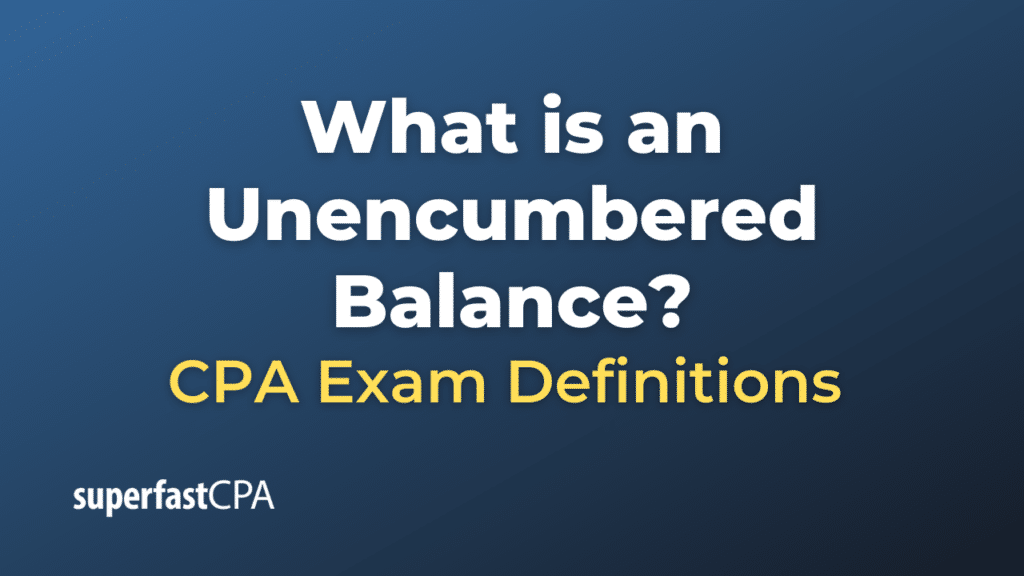Unencumbered Balance
The term “unencumbered balance” refers to the amount of funds that are free from any commitments, obligations, or restrictions and are thus available for discretionary use. In the context of financial management and accounting, especially within governments and organizations, this term is often used to describe budget balances that have not been earmarked or allocated for specific expenses.
Importance of Unencumbered Balance
- Budgetary Control: Knowing the unencumbered balance helps in making decisions about future spending and budget adjustments. It gives an idea of how much is truly “left over” for discretionary spending or emergency needs.
- Financial Flexibility: Having a significant unencumbered balance may offer an organization more flexibility in operations and planning, including the ability to seize new opportunities or weather unexpected challenges.
- Transparency and Accountability: Reporting the unencumbered balance can enhance transparency and help stakeholders understand an organization’s financial position.
- Risk Management: An adequate unencumbered balance can serve as a financial cushion, reducing the risk associated with unexpected expenses or revenue shortfalls.
Example of an Unencumbered Balance
Let’s use a fictional local government entity, “GreenVille City Council,” as an example to illustrate the concept of an unencumbered balance.
Scenario:
- GreenVille City Council has an annual budget of $10 million for public services, infrastructure, and administration.
- It has allocated:
- $4 million for education
- $2 million for public health
- $1 million for public transportation
- $1 million for community programs
- $1 million has been earmarked for a new library that is yet to be built.
Calculating Unencumbered Balance:
- Total Budget: $10 million
- Total Committed and Earmarked Expenses:
- $4 million (Education)
- $2 million (Public Health)
- $1 million (Public Transportation)
- $1 million (Community Programs)
- $1 million (New Library)
- Total = $9 million
- Unencumbered Balance: $10 million (Total Budget) – $9 million (Total Committed and Earmarked Expenses) = $1 million
Implications and Usage:
In this example, GreenVille City Council has an unencumbered balance of $1 million. This means:
- Budgetary Control: The council knows that it has $1 million available for discretionary spending or for unexpected necessities that may arise during the year.
- Financial Flexibility: With an unencumbered balance of $1 million, the council has some leeway to allocate funds for unexpected opportunities or emergencies.
- Transparency and Accountability: By clearly stating the unencumbered balance in its financial statements, the council enhances transparency and shows accountability to its constituents.
- Risk Management: The unencumbered balance serves as a financial cushion that could be useful for unexpected situations, such as urgent infrastructure repairs after a natural disaster.
Understanding the unencumbered balance is crucial for GreenVille City Council’s financial planning and responsible governance. It gives the city a clear picture of how much money is truly available for discretionary activities and emergency expenses, thereby aiding in effective decision-making.













